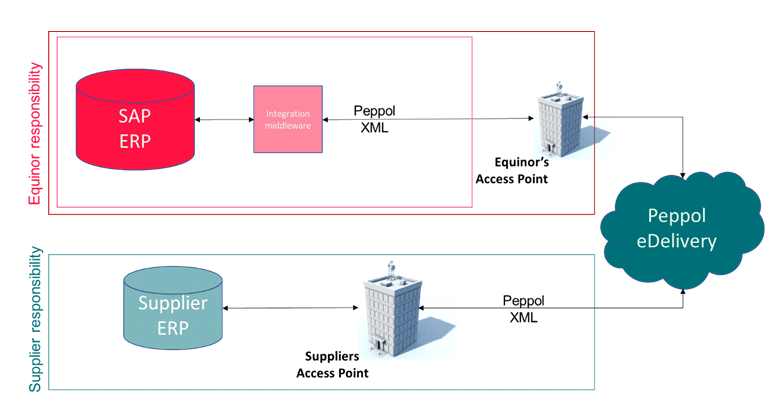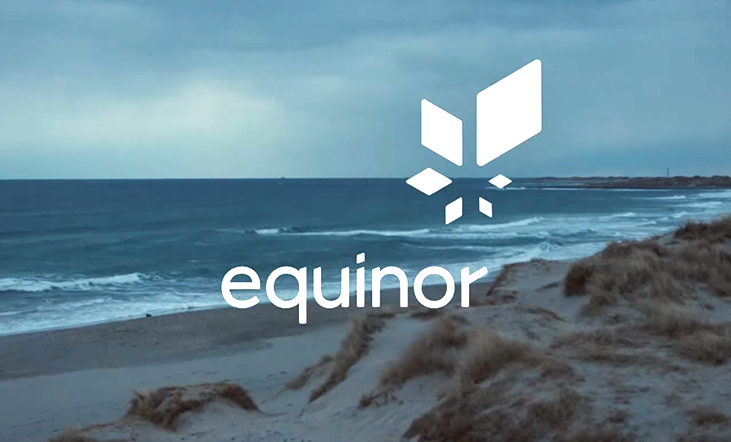About Equinor
Our history with eCommerce
As Statoil, we were an early adopter of eCommerce, starting around year 2000, when Statoil and many other oil and gas operators stated the Trade-Ranger industry initiative. Statoil was also early to adopt eInvoicing in 2004, and has supported multiple formats and multiple communications processes, such as point-to-point, message brokering and business networks. In 2006, Statoil identified the need for an eCommerce solution that did not require IT resources from the supplier side and we developed our Vendor Portal.
Even though we were following the “best practice” of supplier integration we used a lot of effort on onboarding, modification and maintenance for a multitude of solutions, formats and ways of integration. We often spent much more time to agree on format, version and infrastructure than the actual business integration. As a result we only managed to get some of the high volume B2B suppliers integrated and had to leave out a large percentage of our suppliers.
As part of a market survey in 2015 to research alternative eCommerce options, we asked all our potential suppliers on how we should interact digitally. The result surprised us! All responses indicated that the Peppol format and eDelivery infrastructure would be the easiest and fastest way to implement improved eCommerce for Equinor and our suppliers.
A digital interface with our suppliers
Equinor covers a lot of different business activity around the world with differing requirements and work processes, with a substantial volume of transactions that involve high values. Like all industries, our business demands simplification, automation and cost reduction, and it was apparent that a careful selection of an eCommerce solution was important to support our business expectations.
In this context, our goal is to achieve a touchless digital interaction between Equinor and our suppliers, utilising electronic exchange of structured business transactions, removing outdated business activity that relies on manual, paper-based transaction flows.
The key reasons Equinor uses Peppol for our digital supplier interface are:

The benefits of Peppol
Although Peppol was originally an open standard developed by the public authorities for business-to-government procurement, it has been proven to work well between business-to-business. A key component is the Peppol eDelivery infrastructure and the ‘four-corner’ model that is fast and easy to implement.
For eInvoicing, ‘self-onboarding’ by suppliers is possible, making a positive contribution to the rapid growth in transaction volumes.
The diversity of Peppol service providers avoids any lock-in to a single service provider and makes it easy to change provider if and when necessary.
Responsibilities: eCommerce via Peppol

Peppol Case Study: Equinor
Results
The eCommerce focus with our ‘Maintenance and Modification’ suppliers during 2016 clearly illustrated that by utilising structured business messages and combining this with our ERP data, we were able to achieve the business expectations for digitalisation, with more automation at a lower cost for both our business and our suppliers.
Consequently, in Summer 2016, a letter was sent to all our suppliers in Norway to indicate that Peppol was the preferred way to receive an invoice.
In less than three years, for Equinor Energy AS in Norway, 78% of our invoice volume, equal to 81% of invoice value, billed against a purchase order is processed through Peppol.
Between January 2018 and May 2018, the volume of paper invoices was reduced from 7% of the total to just 2%.
Equinor learnings from Peppol implementation
- Identify what business requirements you really need, not what you used in the past;
- Look for the potential of automation and make it a requirement;
- The industry-specific solutions we thought we needed (because we were ‘special’) have become unnecessary so far in our journey;
- Start by using basic transactions in Peppol such as invoices and purchase orders and then learn and evolve into other transaction types;
- Peppol self-onboarding is much better than anything else in the eCommerce world;
- Pre-validation of UBL messages is one of the gems with Peppol as the receiver gets much less errors than we typically experienced with other formats and solutions;
- Our first experiences with Peppol were so positive that we demanded it from our suppliers, starting in Norway.
Arne Johan Larsen
eCommerce Team Leader
Equinor

